How many types of pumpkin do you know? From ambercup to turban squash, we’re covering the 22 most common pumpkin varieties!
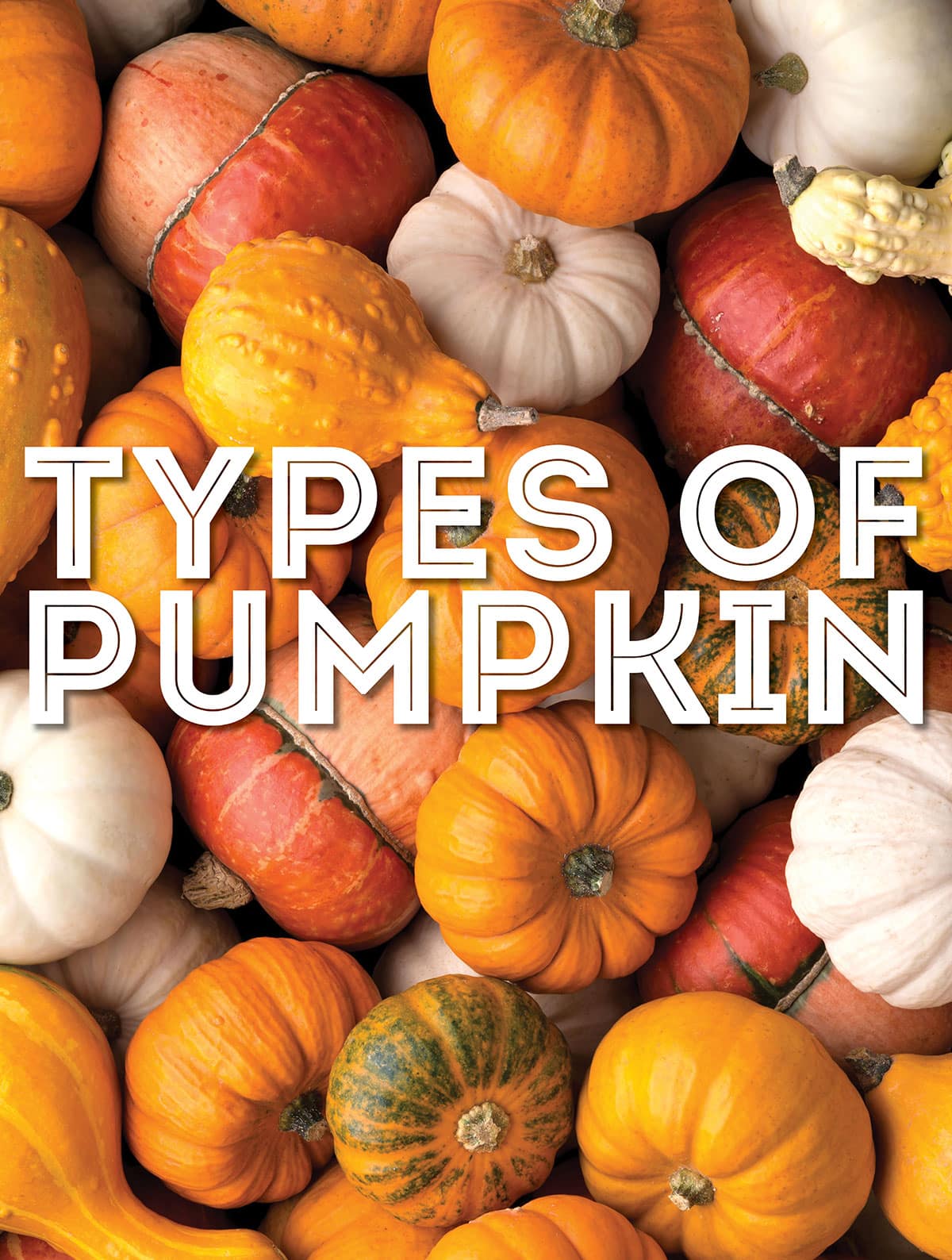
The American relationship with pumpkins is an odd one. We don’t often buy them to eat, but pumpkins are still one of the most popular crops grown in America (largely because of our desire to carve faces into them). Some traditions are just so odd when you think about them.
But through history, tradition, and lattes, pumpkins have become the quintessential autumn squash of America, so let’s dive into the pumpkin patch!
What are pumpkins?
Pumpkins are a type of squash. There are two types of squash: summer and winter squash. While summer squash (like zucchini) have thin skins, winter squash (like pumpkins) tend to have thicker rinds.
Pumpkins, like all other squash, originated in the Americas (more on pumpkin vs squash here!)
Types of Pumpkin
Here are 22 of the most common types of pumpkin. Have you heard of all of them?
- What are pumpkins?
- Types of Pumpkin
- Ambercup Squash
- Atlantic Giant
- Autumn Gold Pumpkins
- Baby Bear Pumpkins
- Baby Boo Pumpkins
- Big Max Pumpkin
- Big Moon Pumpkins
- Blue Prince Pumpkins
- Carnival Squash
- Charisma Pumpkins
- Cinderella’s Carriage
- Connecticut Field Pumpkins
- Dickinson Pumpkin
- Fairytale Pumpkins
- Hijinks Pumpkins
- Jack-O-Lantern Pumpkin
- Long Island Cheese Pumpkins
- Lumina Pumpkins
- Pepitas
- Pie Pumpkins
- Prizewinner Pumpkins
- Super Moon Pumpkins
- Traditional Orange Pumpkins
- Turban Squash
Ambercup Squash
Ambercup Squash also known as Japanese pumpkins grow to the 4–6-pound range. They have a green to orange skin, and are an oddity for a winter squash in that they can be eaten raw or cooked. Typically, only summer squash can really be eaten raw.
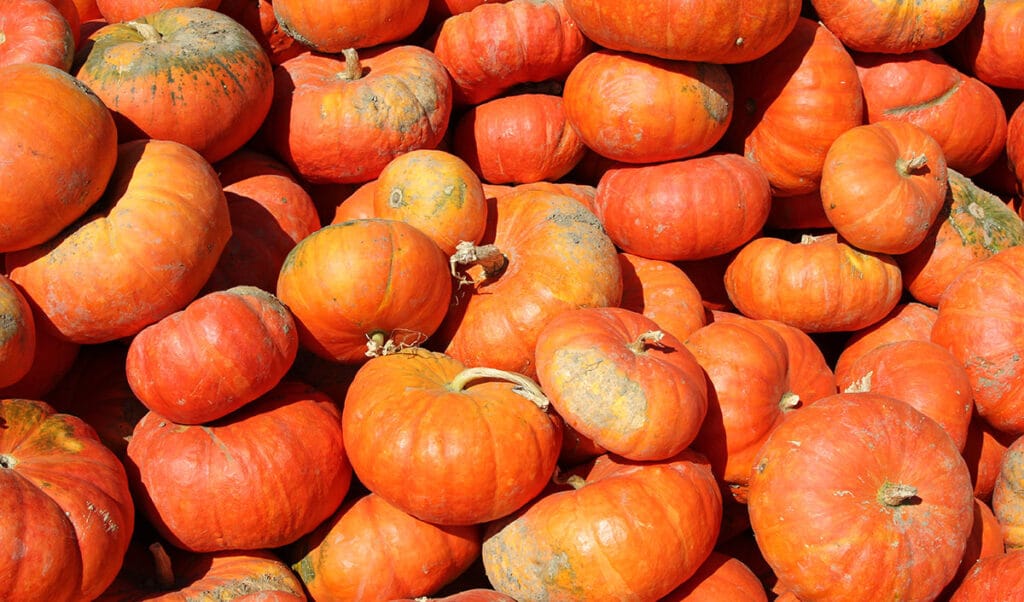
Atlantic Giant
Atlantic Giant is the largest pumpkin variety in the world with some exceeding 1,000 lbs. They have been known to grow 15 lbs in a day! I grew up in Alaska. Each year we went to the Alaska State Fair for the junk food, the shows, and the agriculture exhibits. With the long sunny summer days that far north pumpkins on display grew to enormous 800-900 pound beasts. Alaska’s state record is 1,471 pounds.
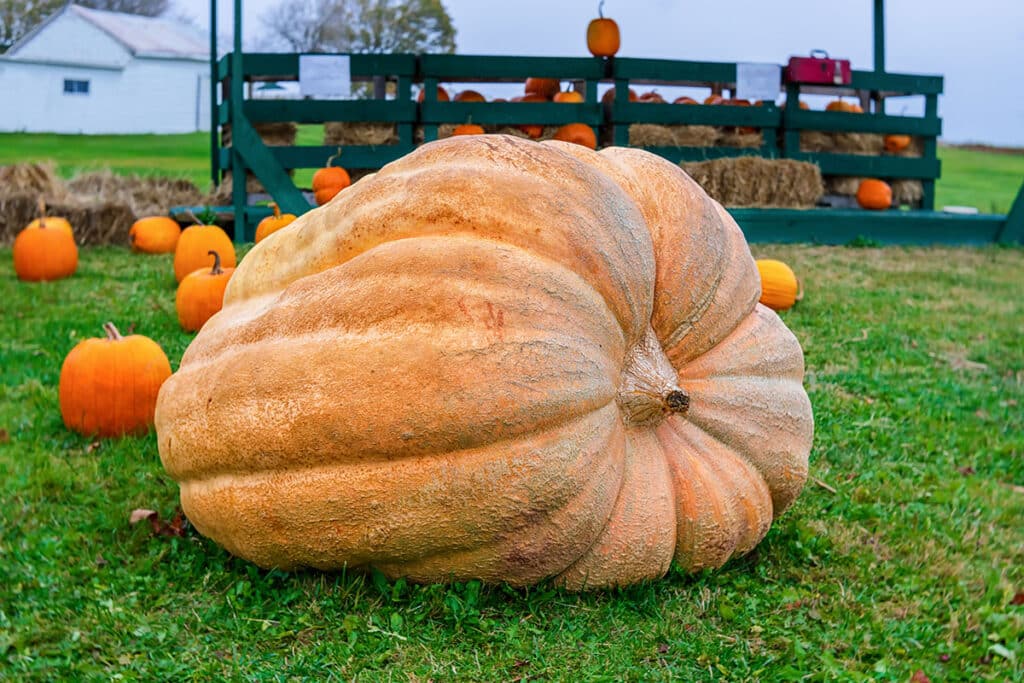
Autumn Gold Pumpkins
Autumn Gold Pumpkins are a hybrid pumpkin with a deep golden color making them a great decorative pumpkin, but they are also very good as pie pumpkins or in just about any pumpkin recipe. Give Creamy Pumpkin Pasta (15 Minutes!) a shot. At 7 calories an ounce and loaded with vitamins A, C, and potassium it is a seriously healthy pasta alternative.
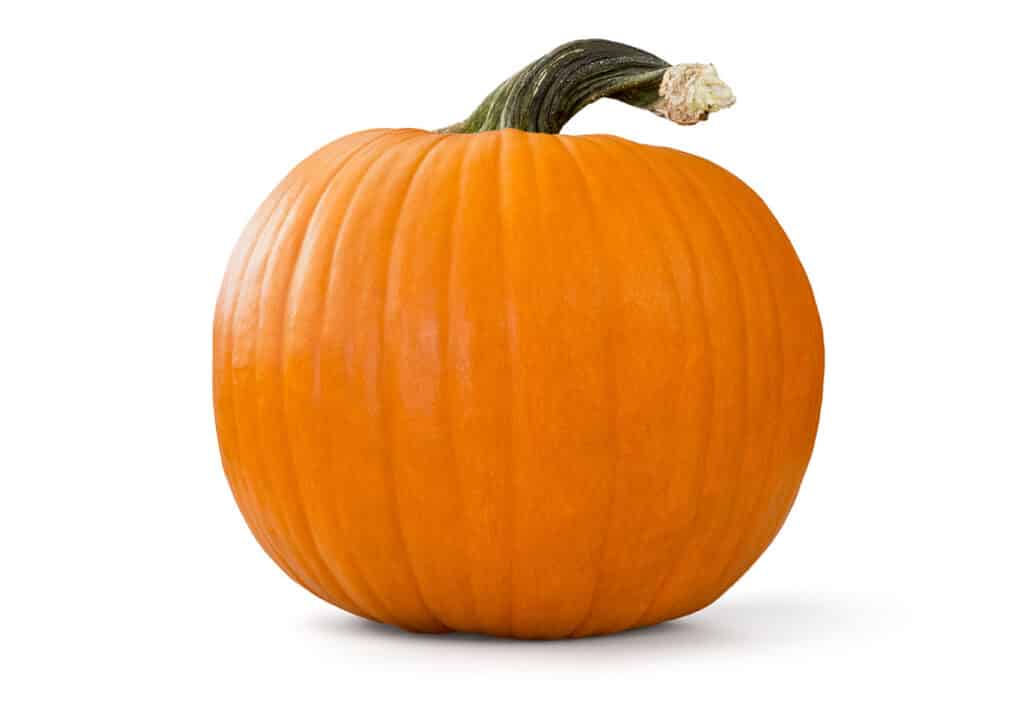
Baby Bear Pumpkins
Baby Bear Pumpkins are a smaller variety (2 pounds and perhaps 4 inches high) that grow well in northern home gardens with their frost resistant quality. They are also pretty good to cook with.
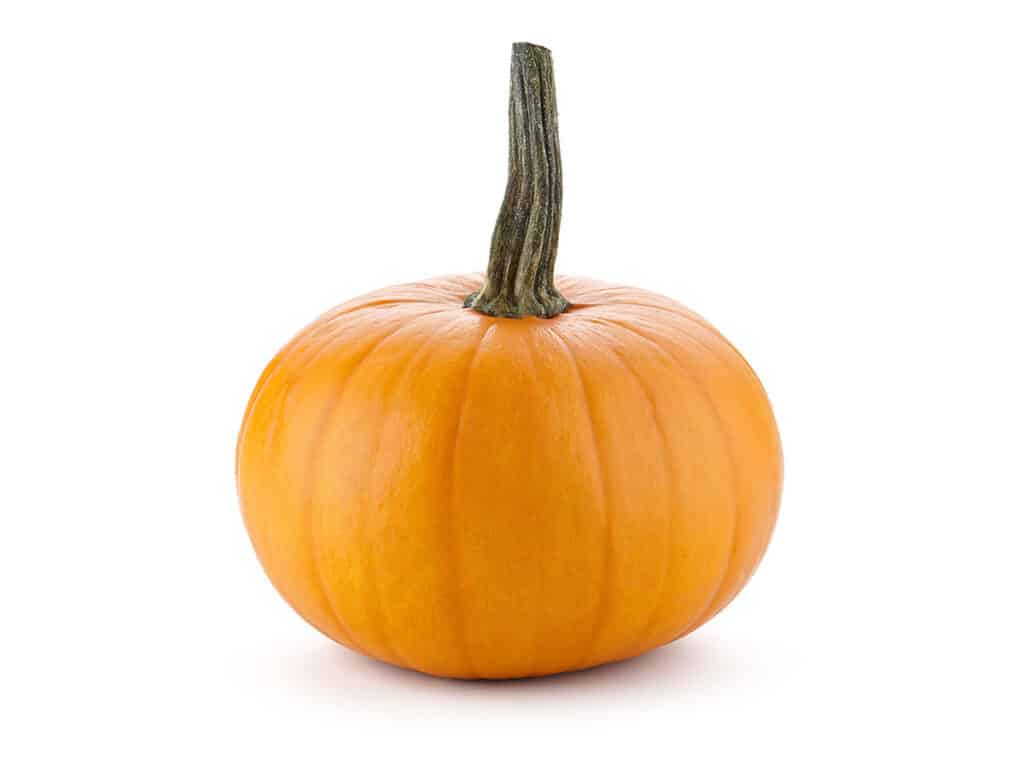
Baby Boo Pumpkins
Baby Boo Pumpkins are actually a variety of acorn squash. These are the tiny little white squash often used in autumn displays.
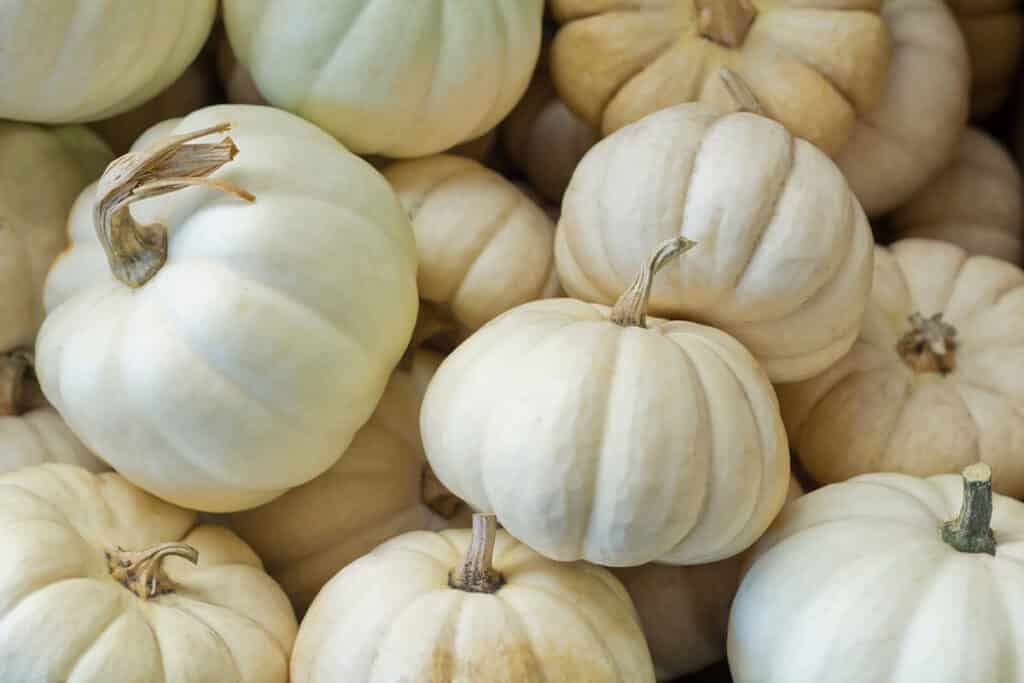
Big Max Pumpkin
Big Max is a pumpkin variety that can grow to over 100 pounds. Obviously, this is no where near the size the Atlantic Giant reach, but bigger than I want to hoist onto the table to cut into a jack-o-lantern. You could certainly, make a lot of pumpkin puree out of one of these beasts.
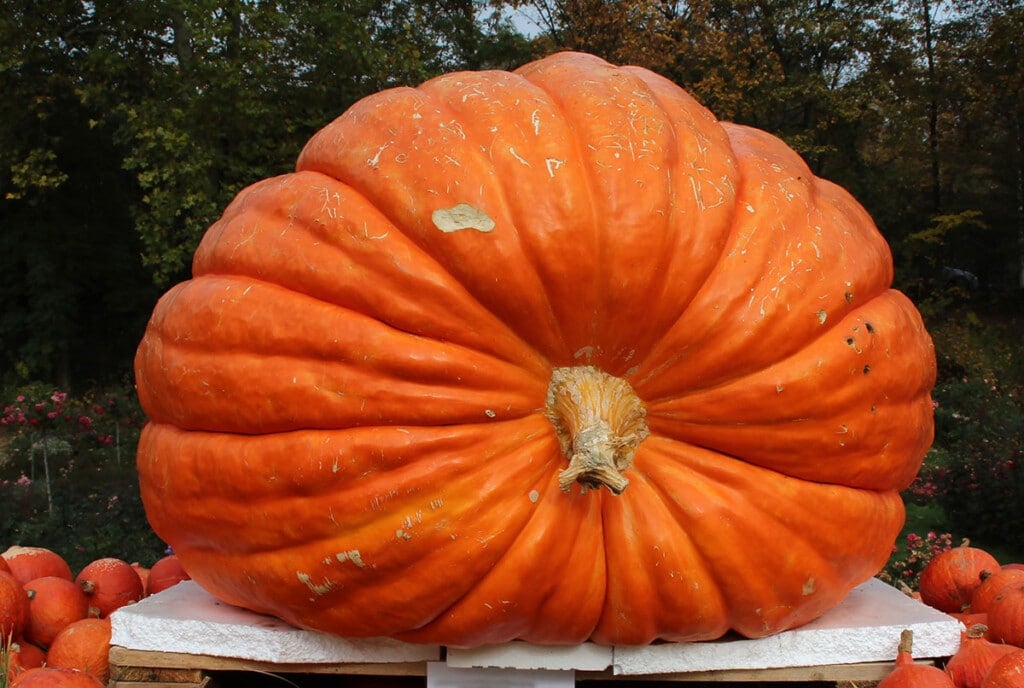
Big Moon Pumpkins
Big Moon Pumpkins are similar in size to the Big Max, but the flesh is a pale color and not normally eaten.
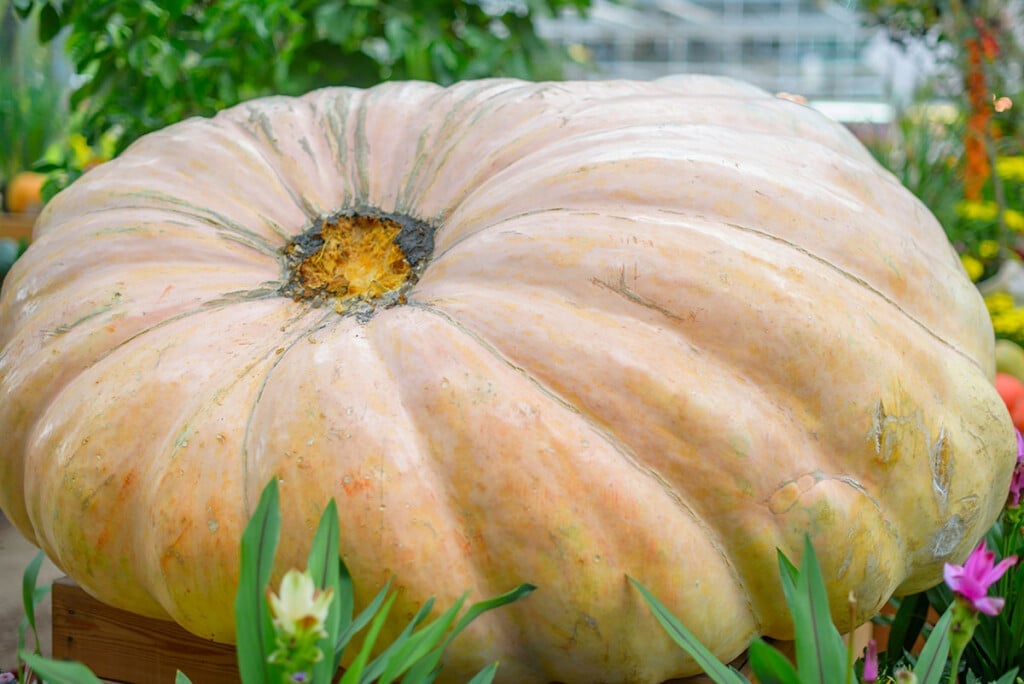
Blue Prince Pumpkins
Blue Prince Pumpkins are a flat pumpkin in an intriguing shade of blue. They are typically from 7-9 pounds and can make a nice display, if you can find them. They have a creamy flesh less stringy than most pumpkins and a sweet flavor making them yet another pumpkin that cooks well. A good recipe for a less stringy pumpkin? How about Pumpkin Yogurt Bites?
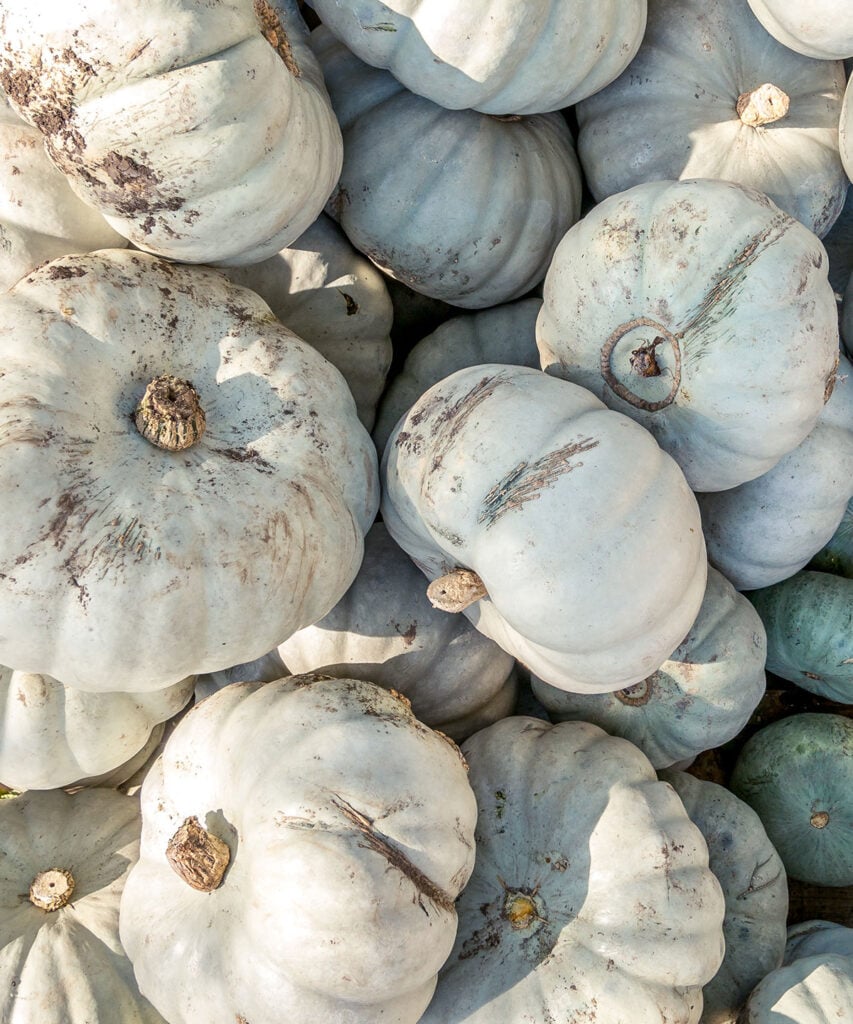
Carnival Squash
Carnival Squash are a small white pumpkin that have a rich orange flesh that is great for baking. So, by all means, buy them to decorate, but as autumn ends puree these little gems and get cooking.
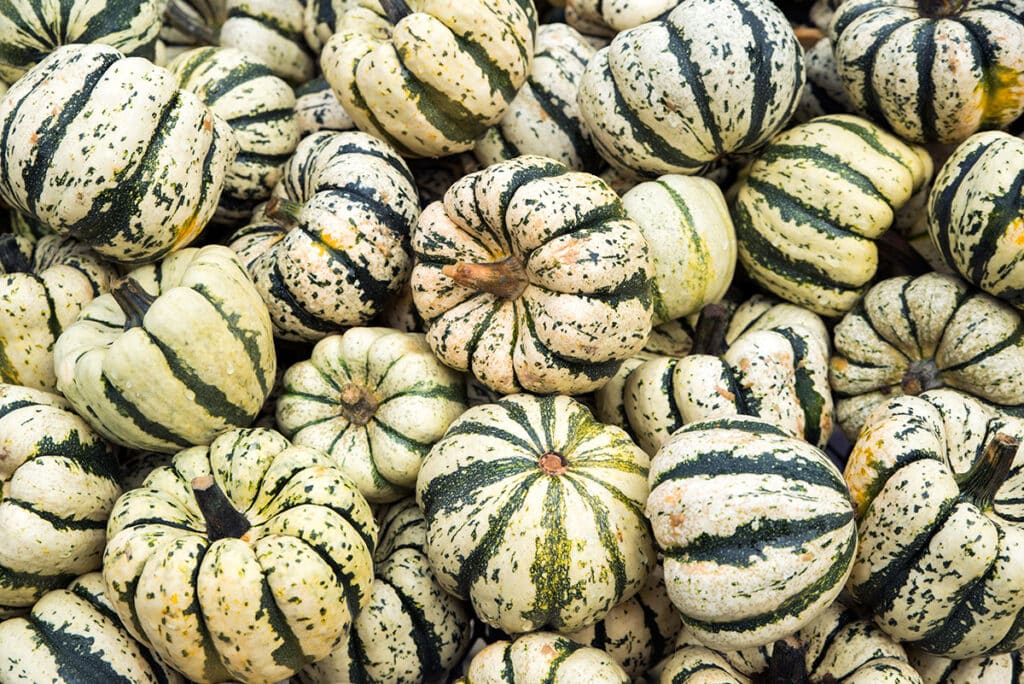
Charisma Pumpkins
Charisma Pumpkins are another classic looking pumpkin that is great for carving. They are said to be easy to grow as well.
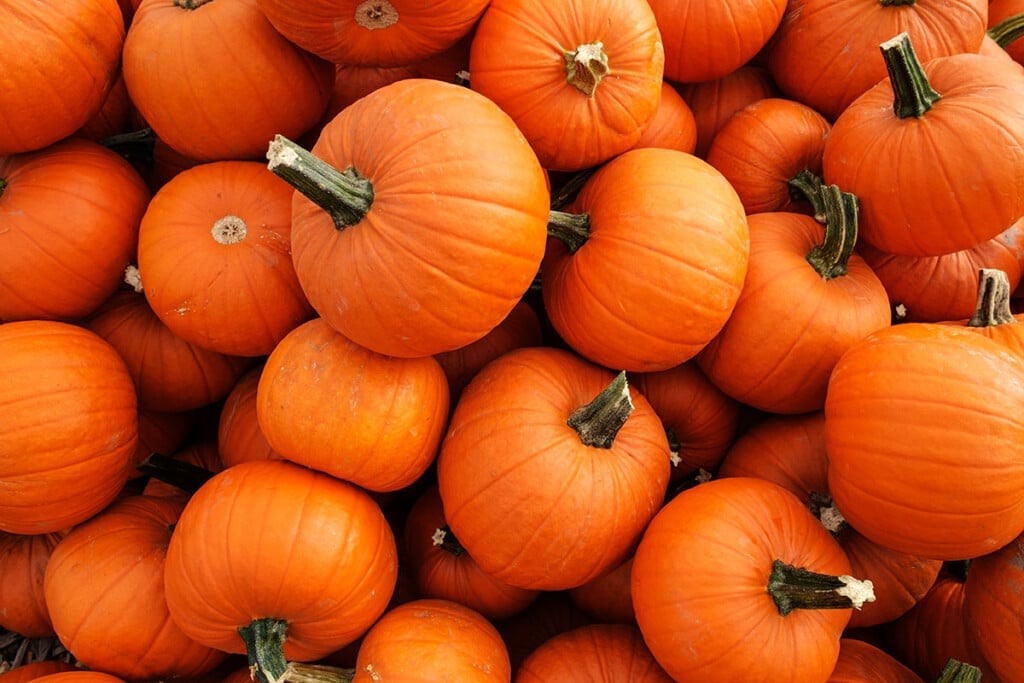
Cinderella’s Carriage
Cinderella’s Carriage is a pumpkin that, of course, looks like the Disney version of Cinderella’s carriage. It is flat and deep reddish-orange. This is one of the pumpkins we often see stacked three high on neighbor’s porches in October. It is, however, a sweet pumpkin suitable for cooking despite being a watery variety. So, when your neighbor tires of their display in November and starts with the Christmas lights, relieve them of the pumpkins, cook them up, and invite them over for our favorite pumpkin dessert.
Connecticut Field Pumpkins
Connecticut Field Pumpkins are one of North America’s oldest varieties. Native Americans were growing them in the New England area before Europeans arrived. They are noteworthy for their round shape and flat bottoms making them ideal for carving. I have to believe that Native Americans would have thought us mad upon seeing us carve a face in a pumpkin.
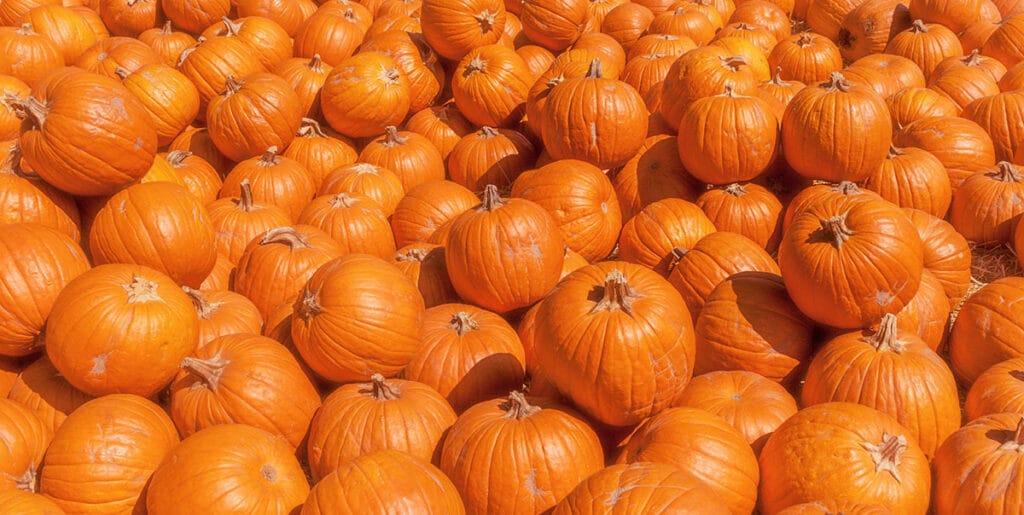
Dickinson Pumpkin
Dickinson Pumpkin is an American heirloom winter squash found most commonly in Illinois though they appear to have originated in Kentucky in the early 19th Century. These typically grow to the 10–15-pound range. Fun Fact! The Dickinson Pumpkin is typically the pumpkin that is used to make canned pumpkin puree.
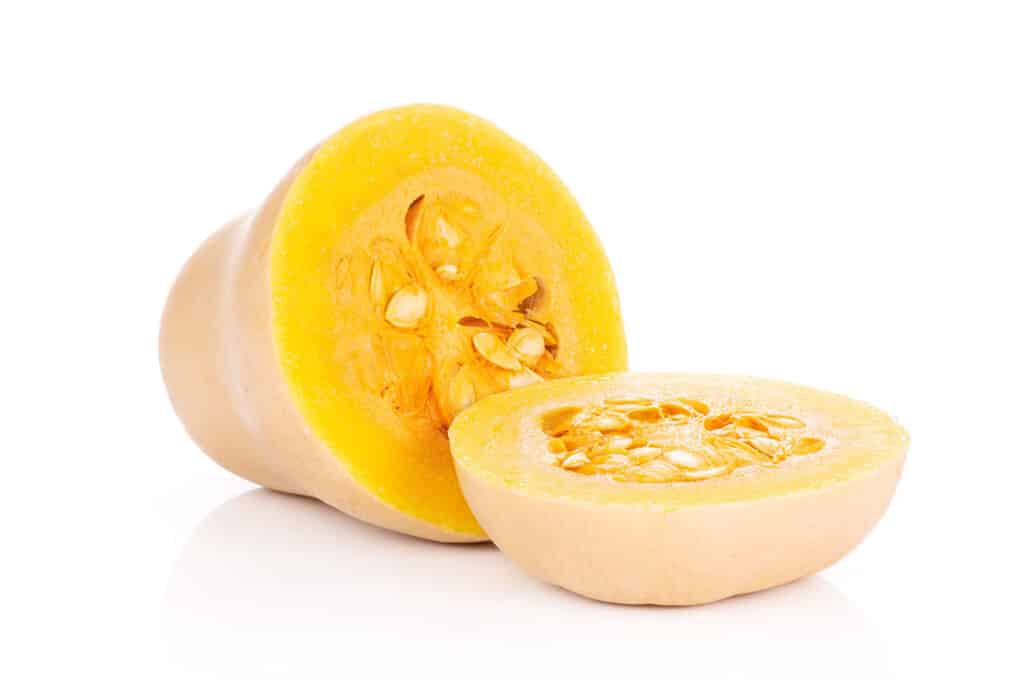
Fairytale Pumpkins
Fairytale Pumpkins look cute in a holiday display, but are also great for eating! This variety can be used either in a puree or cooked and works well with a number of cooking methods — boiling, roasting, or baking. These have a sweet flavor, making the pieces great for using in salads or eating with your favorite fruit dip! Use them in your next batch of pumpkin bread with cream cheese icing, and thank me later. These are not the same as Cinderella pumpkins despite the same naming theme.

Hijinks Pumpkins
Hijinks Pumpkins are another classic pumpkin ideal for carving. They have a very smooth skin compared to other pumpkin varieties, and typically weigh in around 6-9 pounds.
Jack-O-Lantern Pumpkin
This is actually a pumpkin variety not just the name for your artistic creations. These typically weigh in from 15-20 lbs, and have a nice oval shape and orange color. These are not the sweetest pumpkins by any means, but trust us they are still good for cooking. Try roasting them or make them into pumpkin puree.
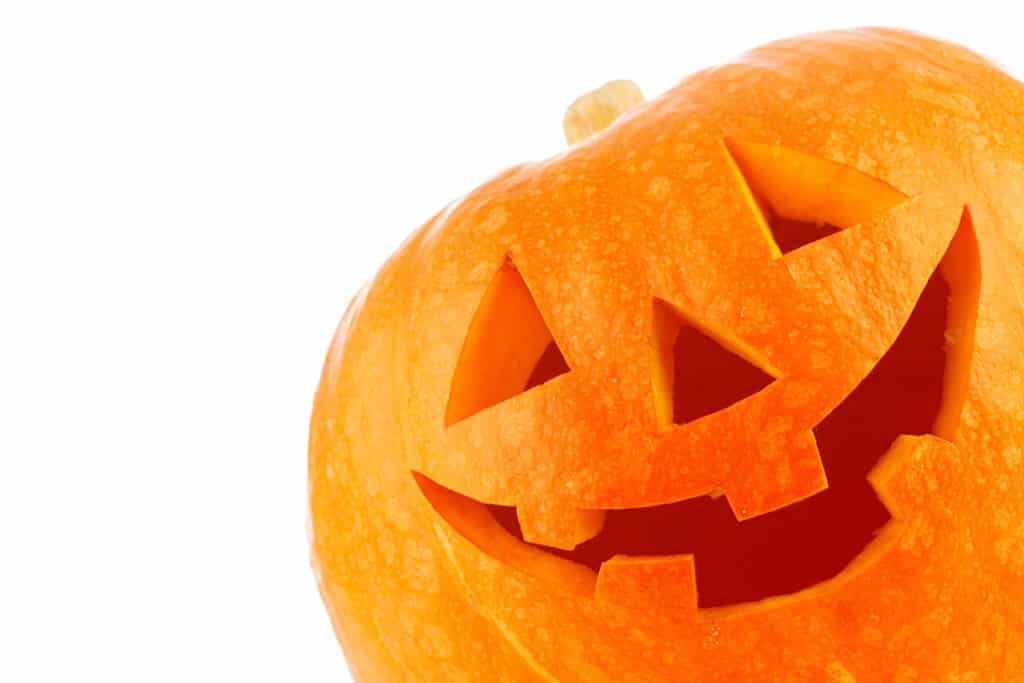
Long Island Cheese Pumpkins
Long Island Cheese Pumpkins are also known as Cucurbita Moschata. These are one of the oldest pumpkin varieties in America. They grow short and flat, making them better for cooking than carving.
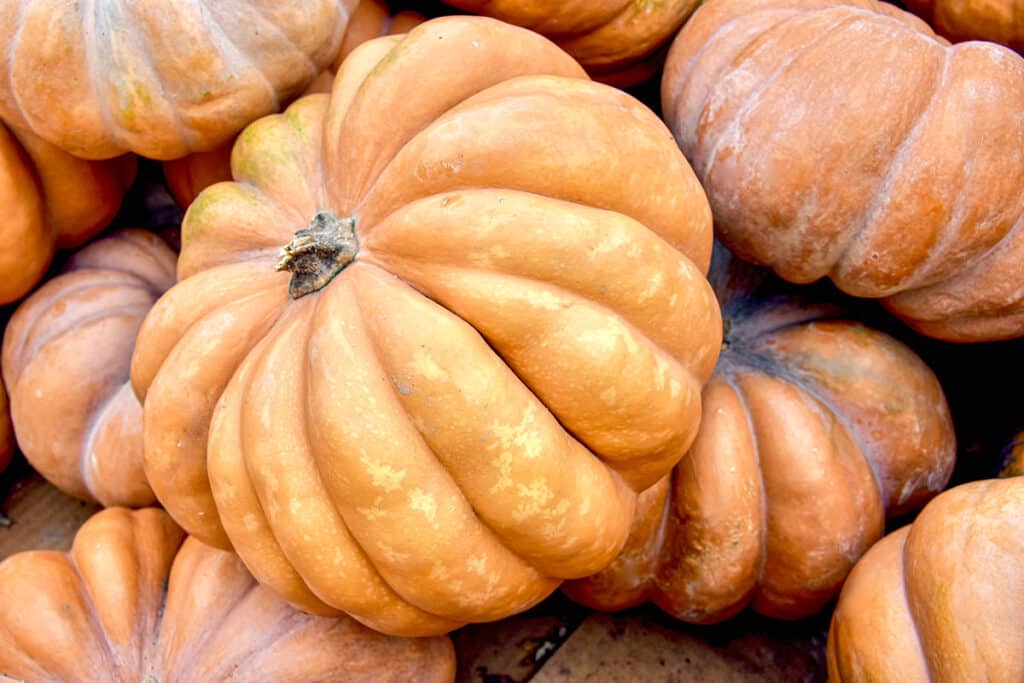
Lumina Pumpkins
Lumina Pumpkins are yet another white (sort of Ivory colored) pumpkin with a smooth skin and 10-15 pound weight. Great for Fall décor, but also good to bake with. They are also called ghost, white, and full moon pumpkins. For culinary uses they are similar to butternut squash (Here are 10 Vegetarian Butternut Squash Recipes You’ll LOVE.)
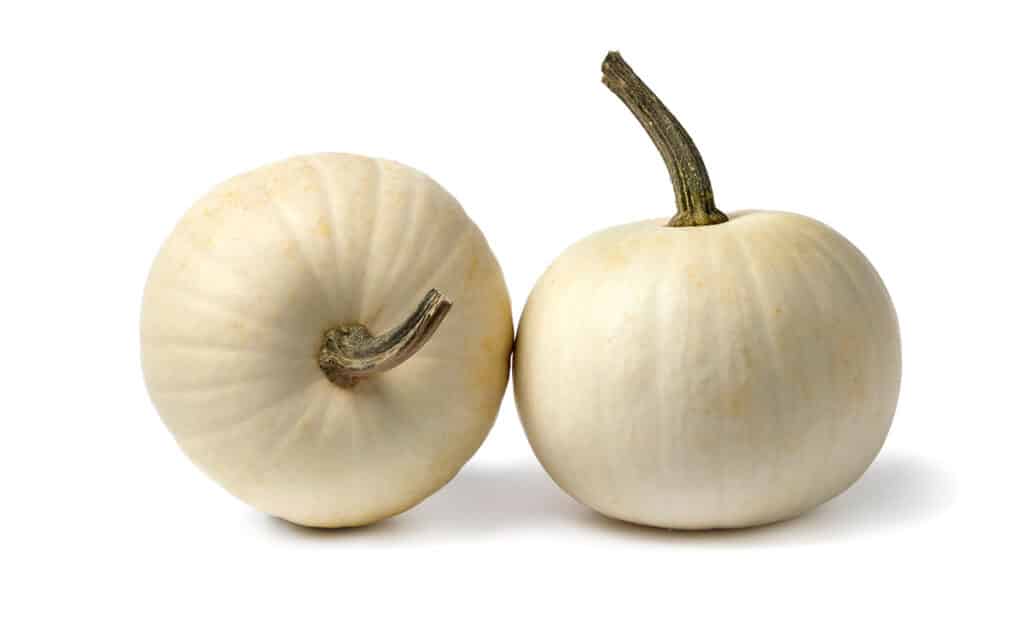
Pepitas
Pepitas are 9–12-pound pumpkins with a distinctive orange and green striped (or perhaps better described as patchy) skin. They are a good pumpkin for autumn displays.
Pie Pumpkins
Pie Pumpkins come in the same bright orange shade as traditional pumpkins, but they’re smaller and rounder. As their name suggests, they are perfect for baking! Their sweet flavor makes them great for pureeing and using in pies, muffins, cupcakes, and a lot more. They’re also not as stringy as traditional pumpkins!
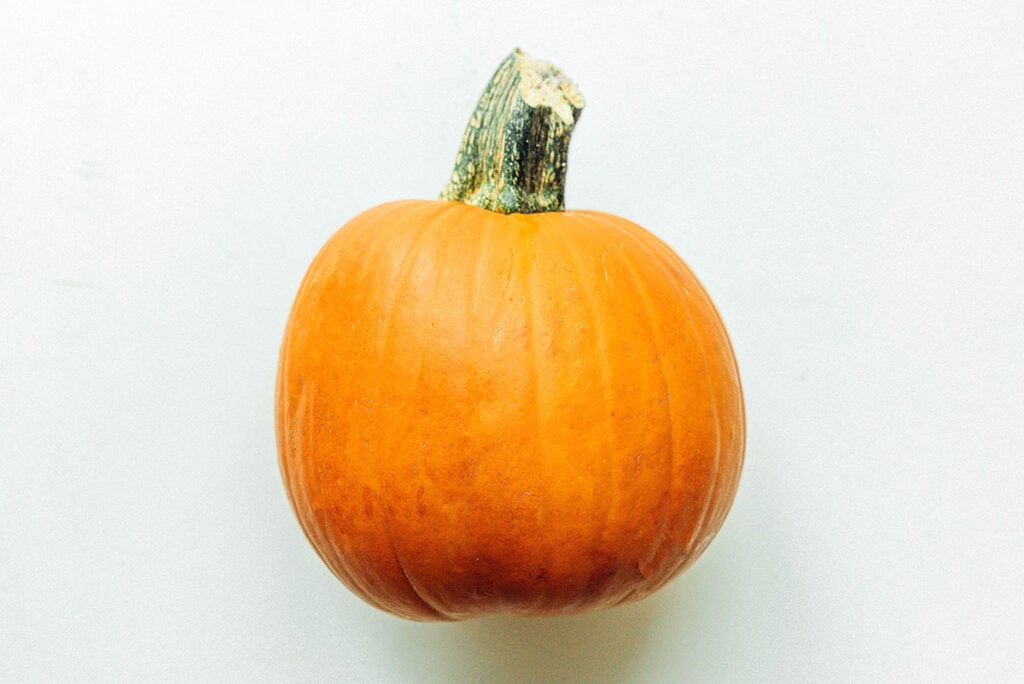
Prizewinner Pumpkins
Prizewinner Pumpkins got this name for a reason. With a little care and coaxing they grow round with an atheistic uniform size and shape. The skin is smooth and bright orange color. These pumpkins grow in the 20-100 lbs. range, so they can be quite big.
Super Moon Pumpkins
Super Moon Pumpkins shouldn’t be confused with Big Moon. The super moon variety is another white pumpkin that grows up to 50 pounds. Like it’s smaller relative the Casper these are great for cooking.
Traditional Orange Pumpkins
These are the classics, perfect for eating or carving into Jack-O-Lanterns. And while their bright and large surface area makes them great for carving, they also taste pretty darn good! Their flavor is mild but less sweet than other varieties. You can roast the entire thing in the oven, bake it into casseroles or soups, or turn it into a puree for using in your favorite pumpkin recipes! Just be sure to leave out the center goo and the seeds – you don’t want a crunchy puree.
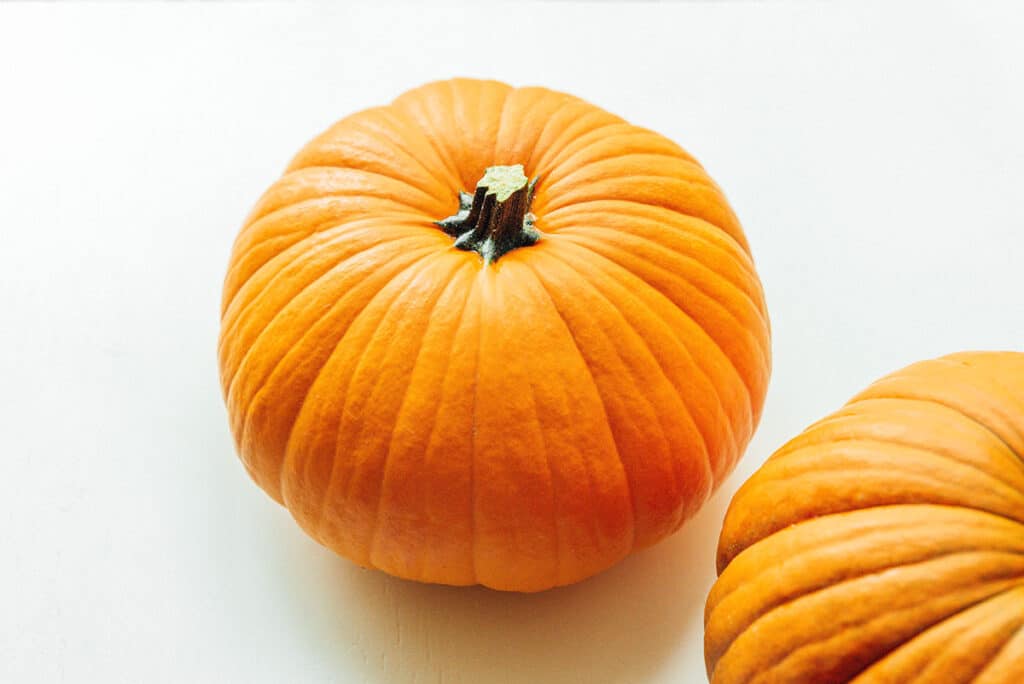
Turban Squash
Turban Squash are a pumpkin variety with a truly unique appearance. They look like a pumpkin with another slightly smaller pumpkin growing out of the head or perhaps smashed down on top like a turban. Adding to the turban like appearance is that the two halves generally are different colors typically orange, orange-red, or pale white. Despite its strange appearance, they are said to suitable for cooking.
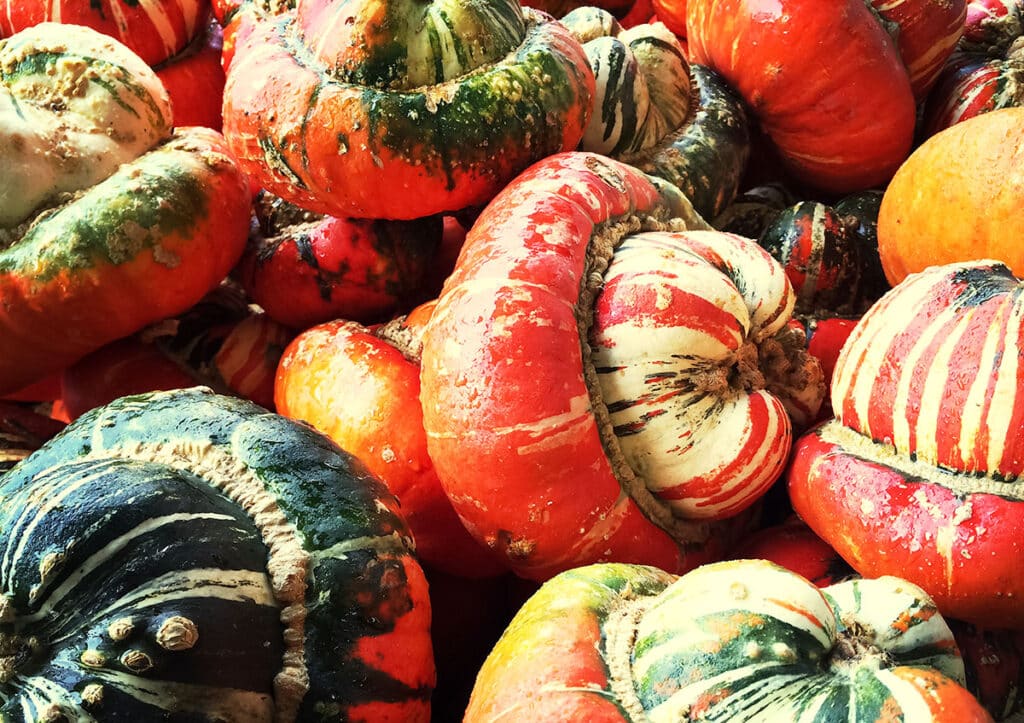
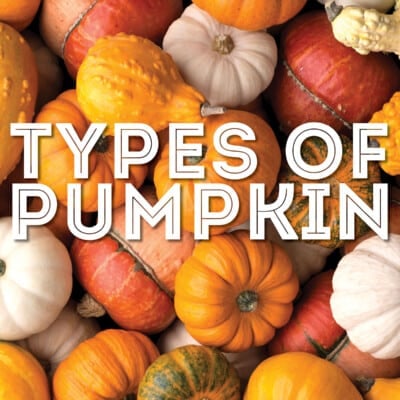
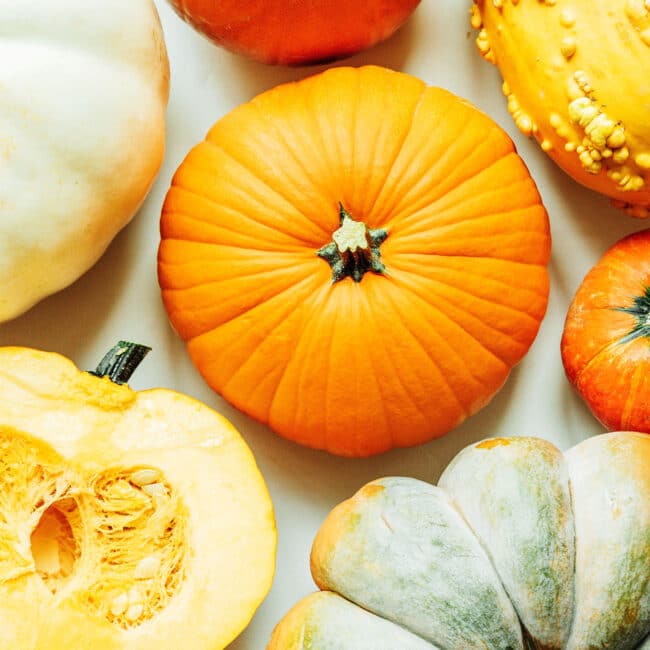
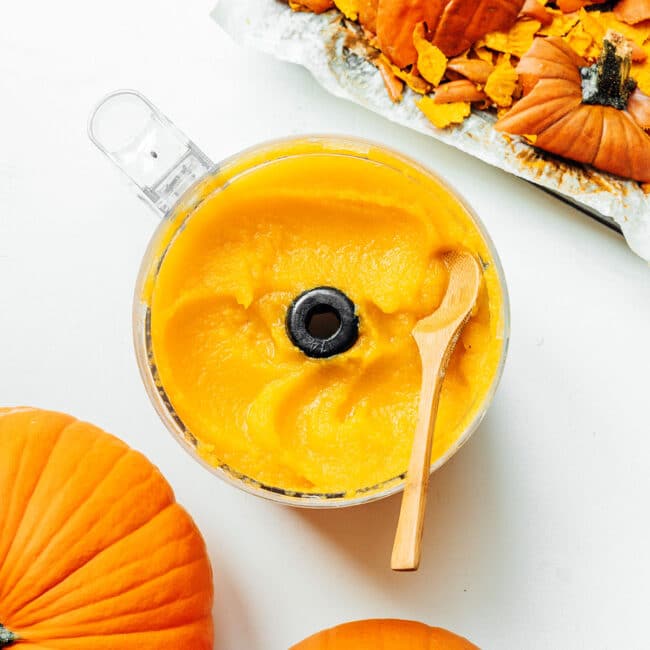
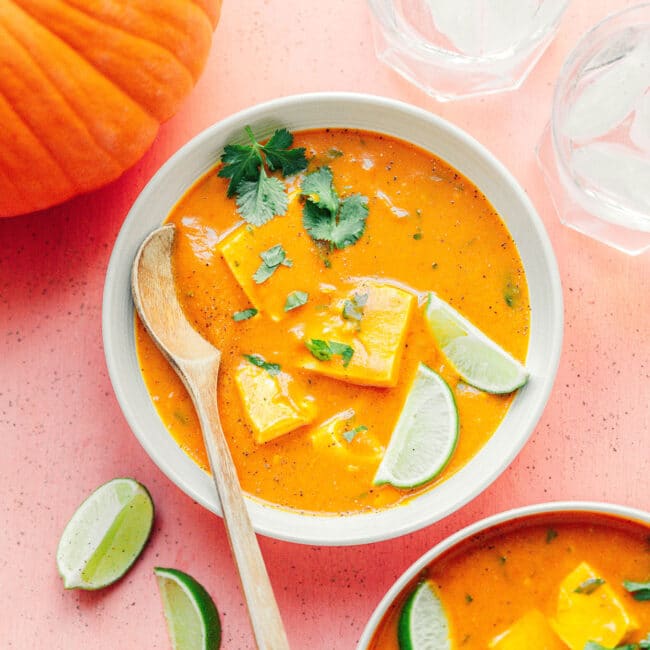
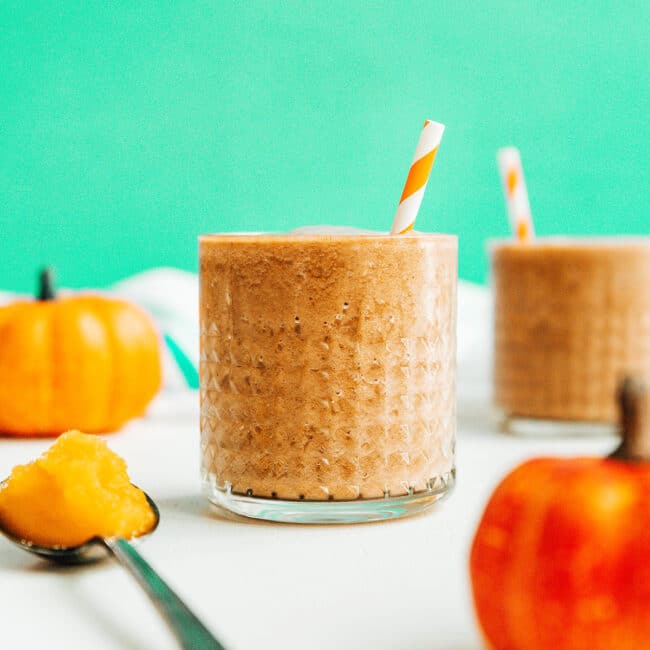
Andie Pritchett says
Hello There! I am a graduate student at San Jose State in Information Science. I want to site your article for a project. I want to know if I can use your photographs, with permissions sited, as visual references for types of pumpkins. The article I am referring to is “22 Types Of Pumpkin From A to Z (With Photos!)”.Thank You so Much.
Sarah Bond says
As long as you provide a link back to the original article that’s fine 😀
Hardus says
Hi Sarah
I was looking for something else when I came across your very informative article. Thank you for this. I did not know there are so many varieties. But even so, there is a childhood favorite that I do not see here – Flat White, also known as Boer pumpkin.
Sarah Bond says
Thanks so much for sharing this variety with us! 😀
Emma says
Hi, i have a question is the Blue Prince the same as a queensland Blue? Or a Jarrahdale?
I just recently recieved Queensland Blue seeds for next year
Thank you
Sarah Bond says
I believe these are all different types of pumpkin, but very similar!
Harold Cooper says
Good presentation of pumpkins!! Keep up this kind of work.
Emmanuel Seni says
This is far more better for learning, thanks!